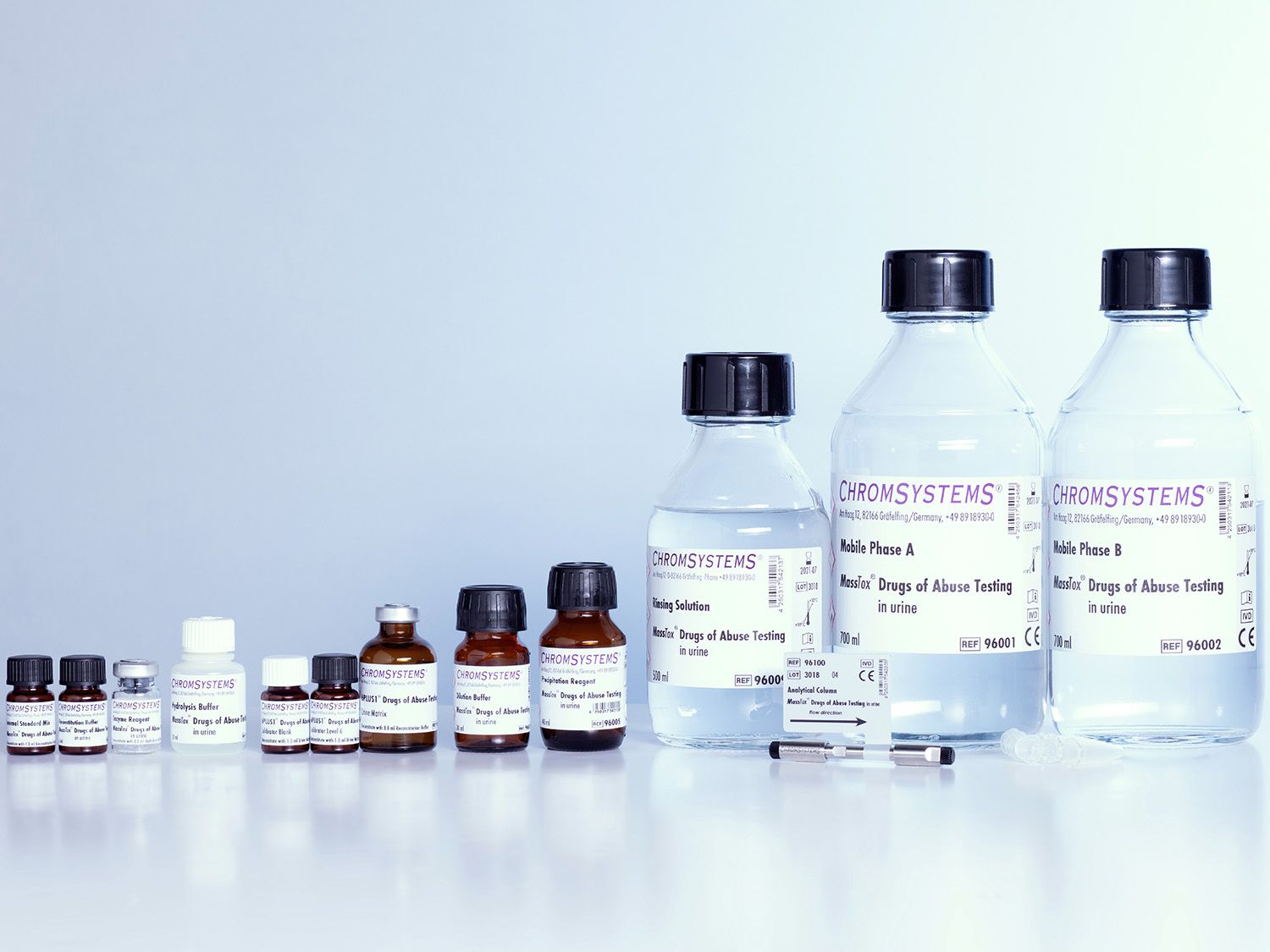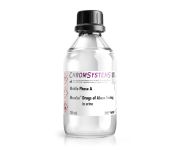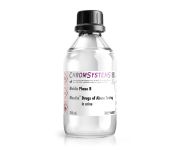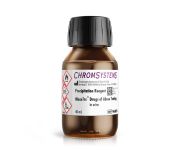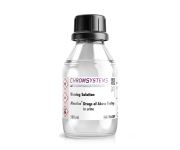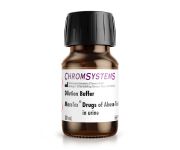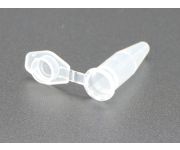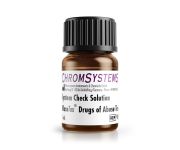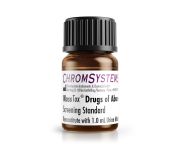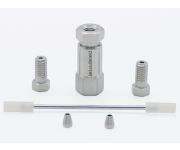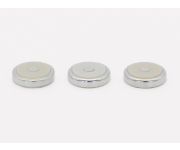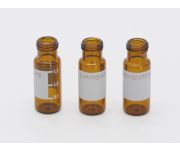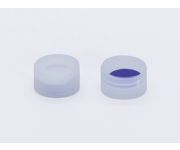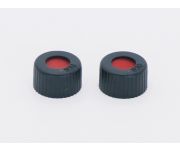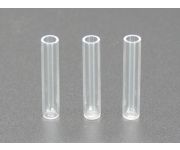MassTox® Drugs of Abuse Testing in Urine with Reaction Vials
More than 100 drugs and metabolites
Target screening and quantitative confirmation within the same run
Sample prep with reaction vials
CE-IVD validated product ready for IVDR within timeframes and transition periods specified by the IVDR 2017/746
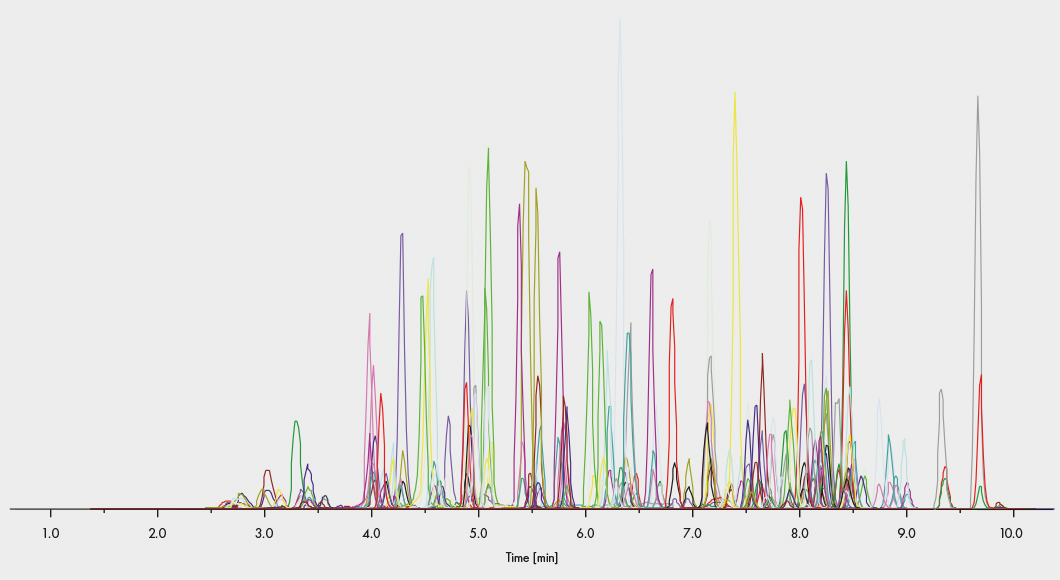

| Amphetamines Amphetamine BDB Butylone 2C-B 2C-I Cathinone MBDB MDA MDEA MDMA MDPV Mephedrone Methamphetamine Methaqualone Methylone Methylphenidate PMA Ritalinic Acid |
Benzodiazepines Alprazolam 7-Aminoclonazepam 7-Aminoflunitrazepam 7-Aminonitrazepam Bromazepam Brotizolam Chlordiazepoxide Clobazam Clonazepam Demoxepam Desalkylflurazepam Desmethylflunitrazepam Diazepam Estazolam Flunitrazepam Flurazepam Lorazepam Lormetazepam Medazepam Midazolam Nitrazepam Norclobazam Nordiazepam α-OH-Alprazolam 3-OH-Bromazepam α-OH-Midazolam α-OH-Triazolam Oxazepam Prazepam Temazepam Triazolam |
Opiates/Opioids Acetylcodeine Buprenorphine Codeine Dihydrocodeine EDDP Fentanyl Hydrocodone Hydromorphone Meconin Meperidine Methadone 6-Monoacetylmorphine Morphine Naloxone Naltrexone Norbuprenorphine Norcodeine Norfentanyl Normeperidine Nortapentadol Nortilidine O-Desmethyltramadol Oxycodone Oxymorphone Papaverine Propoxyphene Sufentanil Tapentadol Thebaine Tilidine Tramadol |
Booster Gabapentin Pregabalin Promethazine Quetiapine |
| Cannabinoids THC-COOH |
|||
| Cocaine Benzoylecgonine Cocaethylene Cocaine Norcocaine |
|||
| Z-Drugs Zaleplon Zolpidem Zopiclone |
|||
| Barbiturates Allobarbital Amobarbital Barbital Butalbital Hexobarbital Pentobarbital Phenobarbital Secbutabarbital Secobarbital Thiopental |
Others Ketamine LSD Mescaline Norketamine O-H-LSD PCP |
Clinical relevance
Drug abuse is one of the most pressing public health issues worldwide, including the use of both illegal drugs and prescription medicines. Cannabis is by far the most commonly consumed illegal drug in Europe. Distant runners-up are the stimulants cocaine, MDMA and amphetamines. Within the class of opioids, heroin continues to be the most widely abused drug.
Drug of abuse testing in forensic medicine can establish both illicit drug use and whether crimes were committed under the influence of drugs. During the treatment of drug addicts, it is also performed to verify the abstinence of illicit drugs during replacement and maintenance therapy. In occupational medicine, drug screening is used to check for abstinence and to determine if a patient is fit to drive. Accurate testing can also help to save lives when someone is intoxicated.
Product advantages
- Assay includes 108 drugs and metabolites
- Target screening and quantitative confirmation within the same run
- Run time of 12 minutes
- Simple sample preparation combined with high selectivity and sensitivity
- Internal standards for 98 analytes
- With reaction vials or with 96 well plate
MassTox® Drugs of Abuse Testing is an LC-MS/MS-based assay that helps to increase speed of analysis and eliminates the need for developing and maintaining in-house methods or specific QC materials. The test is available with reaction vials or 96 well plates and allows the target screening of 108 drugs and metabolites. The confirmatory analysis can also be performed within the same run. It provides a significantly higher selectivity and sensitivity than current immunoassays and is designed to work below cut-offs applied in forensic labs. Semi-quantitative statements are also possible.
The assay includes isotopically labelled internal standards for nearly all analytes and allows the separation of all substances in a single chromatographic separation of approximately 12 minutes. The high stability of the 6PLUS1® Multilevel Calibrator Set and MassCheck® controls with three levels ensure reliable results with highest precision. A specific urine control with a carefully selected set of glucuronide metabolites allows controlling the proper functioning of the hydrolysis process. This Hydrolysis Control can also be used in laboratories working with their own developed methods and enzymes.
| Method of Analysis | LC-MS/MS |
|---|---|
| Number of Tests | 400 |
| Please note | The freely available information on this website, in particular on the sample preparation, are not sufficient to work with our products. Please read instructions and warning notices on products and/or instruction manuals. |
| Lower Limit of Quantitation | down to 13 ng/l |
| Upper Limit of Quantification | for all analytes: from 0.25 to 30 x of cut-off value |
| Intraassay | CV = 1–9 % |
| Interassay | CV = 1–11 % |
| Recovery | 85–115 % |
| Specimen | Urine |
| Sample Preparation |
|
| Run Time | 12 min |
| Injection Volume | 2–20 μl |
| Flow Rate | 0.4 ml/min |
| Column Temperature | 30 °C |
| Ionisation | ESI positive and negative |
| MS/MS Mode | MRM |
| Parameters | Amphetamines, Barbiturates, Benzodiazepines, Booster, Cannabinoids, Cocaine, Opiates/Opioids, Other drugs of abuse, Z-Drugs |
-
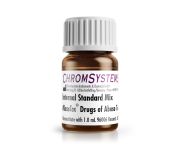 Internal Standard Set Drugs of Abuse TestingOrder no.: 96046
Internal Standard Set Drugs of Abuse TestingOrder no.: 96046MassTox® Drugs of Abuse Testing in Urine - LC-MS/MS
-
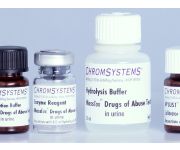 Enzyme Solution Set Drugs of Abuse TestingOrder no.: 96078
Enzyme Solution Set Drugs of Abuse TestingOrder no.: 96078MassTox® Drugs of Abuse Testing in Urine - LC-MS/MS
-
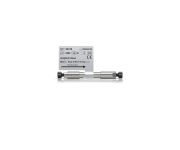 Analytical Column Drugs of Abuse Testing in Urine - LC-MS/MSOrder no.: 96100
Analytical Column Drugs of Abuse Testing in Urine - LC-MS/MSOrder no.: 96100MassTox® Drugs of Abuse Testing in Urine - LC-MS/MS
-
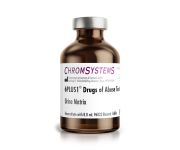 6PLUS1® Multilevel Urine Calibrator Set Drugs of Abuse TestingOrder no.: 96040MassTox® Drugs of Abuse Testing in Urine - LC-MS/MS
6PLUS1® Multilevel Urine Calibrator Set Drugs of Abuse TestingOrder no.: 96040MassTox® Drugs of Abuse Testing in Urine - LC-MS/MS -
 MassCheck® Drugs of Abuse Testing Urine Control SetsOrder no.: 0410/0420/0430MassTox® Drugs of Abuse Testing in Urine – LC-MS/MS
MassCheck® Drugs of Abuse Testing Urine Control SetsOrder no.: 0410/0420/0430MassTox® Drugs of Abuse Testing in Urine – LC-MS/MS -
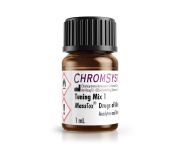 Tuning Mix 1 Drugs of Abuse TestingOrder no.: 96015
Tuning Mix 1 Drugs of Abuse TestingOrder no.: 96015MassTox® Drugs of Abuse Testing in Urine - LC-MS/MS
-
 Tuning Mix 2 Drugs of Abuse TestingOrder no.: 96016
Tuning Mix 2 Drugs of Abuse TestingOrder no.: 96016MassTox® Drugs of Abuse Testing in Urine - LC-MS/MS
-
 Tuning Mix 3 Drugs of Abuse TestingOrder no.: 96017
Tuning Mix 3 Drugs of Abuse TestingOrder no.: 96017MassTox® Drugs of Abuse Testing in Urine - LC-MS/MS
-
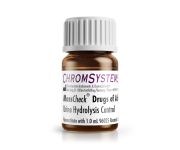 MassCheck® Drugs of Abuse Testing Urine Hydrolysis Control SetOrder no.: 0470
MassCheck® Drugs of Abuse Testing Urine Hydrolysis Control SetOrder no.: 0470MassTox® Drugs of Abuse Testing in Urine - LC-MS/MS
-
 6PLUS1® Multilevel Urine Calibrator Set Drugs of Abuse TestingOrder no.: 96040MassTox® Drugs of Abuse Testing in Urine - LC-MS/MS
6PLUS1® Multilevel Urine Calibrator Set Drugs of Abuse TestingOrder no.: 96040MassTox® Drugs of Abuse Testing in Urine - LC-MS/MS
-
 MassCheck® Drugs of Abuse Testing Urine Control SetsOrder no.: 0410/0420/0430MassTox® Drugs of Abuse Testing in Urine – LC-MS/MS
MassCheck® Drugs of Abuse Testing Urine Control SetsOrder no.: 0410/0420/0430MassTox® Drugs of Abuse Testing in Urine – LC-MS/MS
-
 Analytical Column Drugs of Abuse Testing in Urine - LC-MS/MSOrder no.: 96100
Analytical Column Drugs of Abuse Testing in Urine - LC-MS/MSOrder no.: 96100MassTox® Drugs of Abuse Testing in Urine - LC-MS/MS


| Amphetamines Amphetamine BDB Butylone 2C-B 2C-I Cathinone MBDB MDA MDEA MDMA MDPV Mephedrone Methamphetamine Methaqualone Methylone Methylphenidate PMA Ritalinic Acid |
Benzodiazepines Alprazolam 7-Aminoclonazepam 7-Aminoflunitrazepam 7-Aminonitrazepam Bromazepam Brotizolam Chlordiazepoxide Clobazam Clonazepam Demoxepam Desalkylflurazepam Desmethylflunitrazepam Diazepam Estazolam Flunitrazepam Flurazepam Lorazepam Lormetazepam Medazepam Midazolam Nitrazepam Norclobazam Nordiazepam α-OH-Alprazolam 3-OH-Bromazepam α-OH-Midazolam α-OH-Triazolam Oxazepam Prazepam Temazepam Triazolam |
Opiates/Opioids Acetylcodeine Buprenorphine Codeine Dihydrocodeine EDDP Fentanyl Hydrocodone Hydromorphone Meconin Meperidine Methadone 6-Monoacetylmorphine Morphine Naloxone Naltrexone Norbuprenorphine Norcodeine Norfentanyl Normeperidine Nortapentadol Nortilidine O-Desmethyltramadol Oxycodone Oxymorphone Papaverine Propoxyphene Sufentanil Tapentadol Thebaine Tilidine Tramadol |
Booster Gabapentin Pregabalin Promethazine Quetiapine |
| Cannabinoids THC-COOH |
|||
| Cocaine Benzoylecgonine Cocaethylene Cocaine Norcocaine |
|||
| Z-Drugs Zaleplon Zolpidem Zopiclone |
|||
| Barbiturates Allobarbital Amobarbital Barbital Butalbital Hexobarbital Pentobarbital Phenobarbital Secbutabarbital Secobarbital Thiopental |
Others Ketamine LSD Mescaline Norketamine O-H-LSD PCP |
Clinical relevance
Drug abuse is one of the most pressing public health issues worldwide, including the use of both illegal drugs and prescription medicines. Cannabis is by far the most commonly consumed illegal drug in Europe. Distant runners-up are the stimulants cocaine, MDMA and amphetamines. Within the class of opioids, heroin continues to be the most widely abused drug.
Drug of abuse testing in forensic medicine can establish both illicit drug use and whether crimes were committed under the influence of drugs. During the treatment of drug addicts, it is also performed to verify the abstinence of illicit drugs during replacement and maintenance therapy. In occupational medicine, drug screening is used to check for abstinence and to determine if a patient is fit to drive. Accurate testing can also help to save lives when someone is intoxicated.
Product advantages
- Assay includes 108 drugs and metabolites
- Target screening and quantitative confirmation within the same run
- Run time of 12 minutes
- Simple sample preparation combined with high selectivity and sensitivity
- Internal standards for 98 analytes
- With reaction vials or with 96 well plate
MassTox® Drugs of Abuse Testing is an LC-MS/MS-based assay that helps to increase speed of analysis and eliminates the need for developing and maintaining in-house methods or specific QC materials. The test is available with reaction vials or 96 well plates and allows the target screening of 108 drugs and metabolites. The confirmatory analysis can also be performed within the same run. It provides a significantly higher selectivity and sensitivity than current immunoassays and is designed to work below cut-offs applied in forensic labs. Semi-quantitative statements are also possible.
The assay includes isotopically labelled internal standards for nearly all analytes and allows the separation of all substances in a single chromatographic separation of approximately 12 minutes. The high stability of the 6PLUS1® Multilevel Calibrator Set and MassCheck® controls with three levels ensure reliable results with highest precision. A specific urine control with a carefully selected set of glucuronide metabolites allows controlling the proper functioning of the hydrolysis process. This Hydrolysis Control can also be used in laboratories working with their own developed methods and enzymes.
| Method of Analysis | LC-MS/MS |
|---|---|
| Number of Tests | 400 |
| Please note | The freely available information on this website, in particular on the sample preparation, are not sufficient to work with our products. Please read instructions and warning notices on products and/or instruction manuals. |
| Lower Limit of Quantitation | down to 13 ng/l |
| Upper Limit of Quantification | for all analytes: from 0.25 to 30 x of cut-off value |
| Intraassay | CV = 1–9 % |
| Interassay | CV = 1–11 % |
| Recovery | 85–115 % |
| Specimen | Urine |
| Sample Preparation |
|
| Run Time | 12 min |
| Injection Volume | 2–20 μl |
| Flow Rate | 0.4 ml/min |
| Column Temperature | 30 °C |
| Ionisation | ESI positive and negative |
| MS/MS Mode | MRM |
| Parameters | Amphetamines, Barbiturates, Benzodiazepines, Booster, Cannabinoids, Cocaine, Opiates/Opioids, Other drugs of abuse, Z-Drugs |
-
 Internal Standard Set Drugs of Abuse TestingOrder no.: 96046
Internal Standard Set Drugs of Abuse TestingOrder no.: 96046MassTox® Drugs of Abuse Testing in Urine - LC-MS/MS
-
 Enzyme Solution Set Drugs of Abuse TestingOrder no.: 96078
Enzyme Solution Set Drugs of Abuse TestingOrder no.: 96078MassTox® Drugs of Abuse Testing in Urine - LC-MS/MS
-
 Analytical Column Drugs of Abuse Testing in Urine - LC-MS/MSOrder no.: 96100
Analytical Column Drugs of Abuse Testing in Urine - LC-MS/MSOrder no.: 96100MassTox® Drugs of Abuse Testing in Urine - LC-MS/MS
-
 6PLUS1® Multilevel Urine Calibrator Set Drugs of Abuse TestingOrder no.: 96040MassTox® Drugs of Abuse Testing in Urine - LC-MS/MS
6PLUS1® Multilevel Urine Calibrator Set Drugs of Abuse TestingOrder no.: 96040MassTox® Drugs of Abuse Testing in Urine - LC-MS/MS -
 MassCheck® Drugs of Abuse Testing Urine Control SetsOrder no.: 0410/0420/0430MassTox® Drugs of Abuse Testing in Urine – LC-MS/MS
MassCheck® Drugs of Abuse Testing Urine Control SetsOrder no.: 0410/0420/0430MassTox® Drugs of Abuse Testing in Urine – LC-MS/MS -
 Tuning Mix 1 Drugs of Abuse TestingOrder no.: 96015
Tuning Mix 1 Drugs of Abuse TestingOrder no.: 96015MassTox® Drugs of Abuse Testing in Urine - LC-MS/MS
-
 Tuning Mix 2 Drugs of Abuse TestingOrder no.: 96016
Tuning Mix 2 Drugs of Abuse TestingOrder no.: 96016MassTox® Drugs of Abuse Testing in Urine - LC-MS/MS
-
 Tuning Mix 3 Drugs of Abuse TestingOrder no.: 96017
Tuning Mix 3 Drugs of Abuse TestingOrder no.: 96017MassTox® Drugs of Abuse Testing in Urine - LC-MS/MS
-
 MassCheck® Drugs of Abuse Testing Urine Hydrolysis Control SetOrder no.: 0470
MassCheck® Drugs of Abuse Testing Urine Hydrolysis Control SetOrder no.: 0470MassTox® Drugs of Abuse Testing in Urine - LC-MS/MS
-
 6PLUS1® Multilevel Urine Calibrator Set Drugs of Abuse TestingOrder no.: 96040MassTox® Drugs of Abuse Testing in Urine - LC-MS/MS
6PLUS1® Multilevel Urine Calibrator Set Drugs of Abuse TestingOrder no.: 96040MassTox® Drugs of Abuse Testing in Urine - LC-MS/MS
-
 MassCheck® Drugs of Abuse Testing Urine Control SetsOrder no.: 0410/0420/0430MassTox® Drugs of Abuse Testing in Urine – LC-MS/MS
MassCheck® Drugs of Abuse Testing Urine Control SetsOrder no.: 0410/0420/0430MassTox® Drugs of Abuse Testing in Urine – LC-MS/MS
-
 Analytical Column Drugs of Abuse Testing in Urine - LC-MS/MSOrder no.: 96100
Analytical Column Drugs of Abuse Testing in Urine - LC-MS/MSOrder no.: 96100MassTox® Drugs of Abuse Testing in Urine - LC-MS/MS

